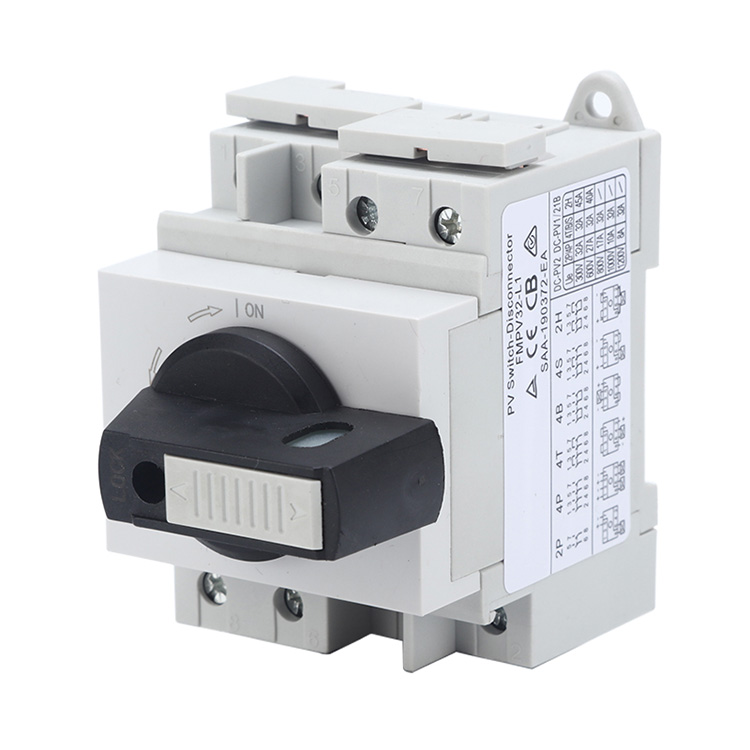Shielding Power: Understanding the IP Ratings of Din Rail Mounted Padlockable DC Isolator Switches
2024-01-22
Introduction:
In the dynamic landscape of electrical installations, protection against environmental factors such as dust and water is critical for ensuring the longevity and reliability of components. Din Rail Mounted Padlockable DC Isolator Switches, integral to power control systems, come equipped with specific degrees of protection, often represented by IP (Ingress Protection) ratings. In this blog post, we will explore the significance of IP ratings and how they safeguard these switches against dust and water ingress.
Decoding IP Ratings:
IP ratings provide a standardized measure of the degree of protection offered by electrical enclosures, including Din Rail Mounted Padlockable DC Isolator Switches, against the intrusion of solids (like dust) and liquids (such as water). The IP rating consists of two digits, each conveying specific information about the level of protection.
Breaking Down IP Ratings:
1. First Digit (Protection Against Solids):
The first digit of the IP rating indicates the level of protection against solid objects. The scale ranges from 0 to 6, with higher numbers signifying increased protection.
- 0: No protection
- 1: Protection against objects larger than 50mm
- 2: Protection against objects larger than 12.5mm
- ...
- 6: Dust-tight protection (no ingress of dust)
2. Second Digit (Protection Against Liquids):
The second digit represents the level of protection against liquids. This scale ranges from 0 to 9, with higher numbers indicating greater protection.
- 0: No protection
- 1: Protection against vertically falling drops of water
- 2: Protection against direct sprays of water up to 15 degrees from vertical
- ...
- 9: Protection against high-pressure and high-temperature water jets
Degree of Protection for Din Rail Mounted Padlockable DC Isolator Switches:
1. Dust Protection:
Din Rail Mounted Padlockable DC Isolator Switches often have a high level of dust protection, typically indicated by a first digit of 5 or 6. This ensures that the switch is dust-tight, minimizing the risk of internal contamination.
2. Water Protection:
The water protection level varies based on the intended use of the switch. For example, switches used in outdoor environments may have a higher second digit, indicating increased protection against water ingress from rain or other sources.
Benefits of IP Ratings:
1. Enhanced Reliability:
High IP ratings ensure that the Din Rail Mounted Padlockable DC Isolator Switch remains reliable even in challenging environments where dust and water are prevalent.
2. Extended Lifespan:
Protection against environmental factors contributes to the extended lifespan of the switch, reducing the risk of corrosion and damage.
3. Adaptability to Varied Environments:
Switches with specific IP ratings are suitable for a wide range of environments, including industrial settings, outdoor installations, and more.
Considerations When Choosing:
1. Environmental Conditions:
Consider the specific environmental conditions where the switch will be installed and choose an IP rating accordingly.
2. Application Requirements:
Align the IP rating with the specific requirements of the electrical system and its exposure to dust and water.
3. Compliance with Standards:
Ensure that the Din Rail Mounted Padlockable DC Isolator Switch complies with industry standards for the intended environmental conditions.
Conclusion:
The IP rating of Din Rail Mounted Padlockable DC Isolator Switches serves as a crucial indicator of their resilience against dust and water ingress. By understanding these ratings and selecting switches with appropriate levels of protection, users can ensure the durability and reliability of their electrical power control systems in a variety of environments. Whether in industrial, outdoor, or other challenging settings, the right IP-rated switch becomes a shield, safeguarding the heart of the electrical infrastructure from the elements.



